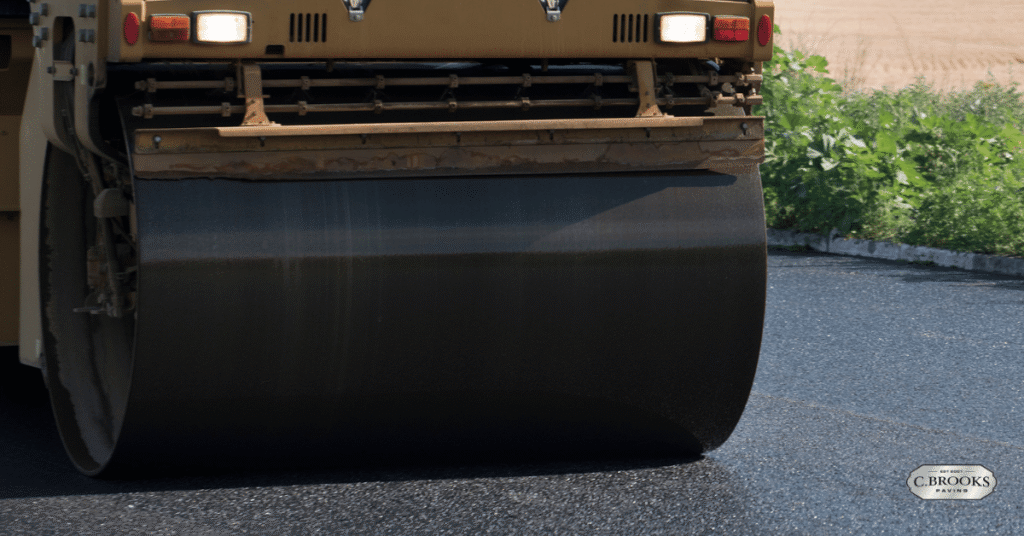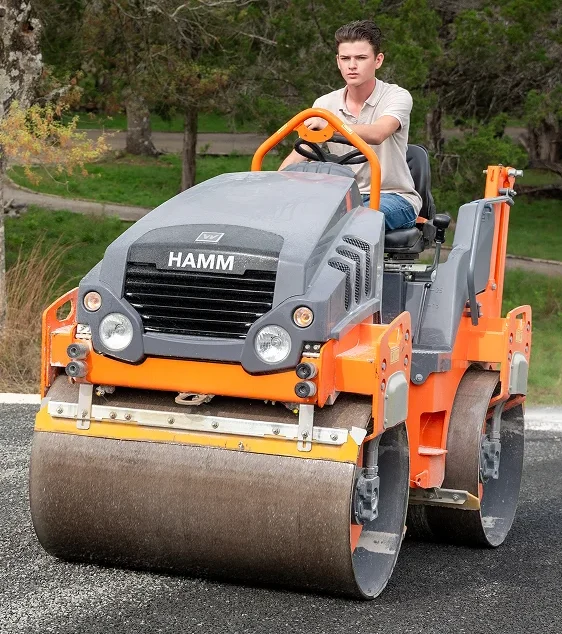If you’re planning a new driveway, ranch road, or private lane, one of the first questions that comes to mind is how long does chipseal last?
At C. Brooks Paving, our crews have been paving across Bulverde, the Hill Country, and South Texas for four generations. We’ve seen chipseal roads hold up beautifully for well over a decade when installed and maintained the right way.
In this guide, we’ll break down exactly how long chipseal lasts, plus the 10 key factors that determine its durability and performance.
What Is Chipseal?
Chipseal (also called tar and chip paving) is a cost-effective alternative to traditional asphalt paving. It combines a liquid asphalt binder with a layer of stone chips or gravel, which is then compacted and sealed.
The result? A natural-looking, textured surface that provides excellent traction and rustic appeal perfect for ranch roads, long driveways, and private community streets across South Texas.
Unlike full asphalt paving, chipseal uses less material, making it more affordable while still offering long-term protection from traffic and weather.
Average Lifespan of Chipseal Pavement
On average, a properly installed chipseal surface lasts 7 to 10 years before needing resealing or resurfacing.
With quality materials, good drainage, and regular maintenance, it can last up to 12–15 years especially on lower-traffic surfaces like rural driveways.
For comparison:
- Asphalt paving typically lasts 15–20 years.
- Concrete paving can exceed 25 years but costs significantly more upfront.
So, chipseal strikes the perfect balance between longevity and affordability, making it ideal for Texas property owners who want long-lasting results without the high cost.

10 Key Factors That Affect How Long Chipseal Lasts
Now let’s look at what really determines the lifespan of your chipseal surface and how you can maximize it.
1. Quality of Base Preparation
A strong foundation is everything.
If the base beneath the chipseal isn’t properly graded, compacted, and stabilized, the surface will crack or rut over time.
At C. Brooks Paving, we always begin with precise base preparation ensuring a smooth, durable surface that resists shifting and erosion.
2. Type of Aggregate Used
Not all stone chips are created equal.
Harder stones such as granite or trap rock resist wear far better than softer materials like limestone.
The size of the chips also matters larger stones provide better traction, while smaller ones create a smoother finish.
Using premium-grade aggregates helps your chipseal stand strong against traffic and Texas heat.
3. Quality of the Asphalt Binder
The asphalt emulsion acts as the glue that holds the entire surface together.
High-quality binders offer stronger adhesion, better waterproofing, and increased UV resistance.
We use top-grade asphalt emulsions specifically designed for South Texas climates, ensuring a long-lasting bond between binder and stone.
4. Traffic Volume & Type
The more traffic your road sees, the faster it wears down.
Light residential traffic can keep a chipseal looking new for over a decade, while heavy truck traffic will reduce its lifespan.
For example, a chipsealed Bulverde ranch driveway will last much longer than a commercial parking lot with daily vehicle flow.
5. Local Climate & Weather Conditions
Texas weather is no joke.
High temperatures, UV rays, and heavy rains can cause chipseal to dry out or erode over time.
Fortunately, our team understands regional conditions across the Hill Country and South Texas, and we adjust materials and application methods to withstand heat, humidity, and rainfall.
6. Drainage & Water Control
Water is chipseal’s biggest enemy.
Poor drainage allows standing water to seep into the base, weakening the surface and causing cracks or potholes.
That’s why we emphasize proper slope design and grading during installation so water flows away from the surface instead of pooling on it.
7. Maintenance & Resealing Frequency
Like any pavement, chipseal requires periodic care.
Sweeping away debris, sealing small cracks, and applying a reseal coat every 5–7 years can extend its lifespan by another decade.
A little upkeep goes a long way. Think of it as protecting your investment not just fixing problems later.
8. Installation Technique & Crew Experience
Even the best materials won’t perform if they’re applied incorrectly.
Timing, temperature, and even the speed of chip distribution play a huge role in the finished result.
Our four generations of experience mean every step from heating the binder to spreading aggregate is done with precision and care. That expertise ensures your pavement is built to last.
9. Subgrade Soil Stability
What’s under your pavement matters just as much as what’s on top.
If the soil below the base is soft or clay-heavy, it can shift with moisture changes, causing the surface to crack.
That’s why we evaluate and stabilize subgrade conditions before paving, ensuring a solid, long-term foundation.
10. Usage Purpose (Driveway vs Roadway)
A lightly used driveway or ranch road will naturally last longer than a busy city road or parking lot.
Understanding how your surface will be used helps determine the ideal chip size, asphalt ratio, and number of layers needed.
At C. Brooks Paving, we customize every project for its purpose residential, commercial, or municipal.
How to Extend the Life of Your Chipseal Surface
To get the most out of your chipseal investment, follow these maintenance tips:
- Keep it clean Sweep off dirt, rocks, and debris to prevent surface wear.
- Avoid heavy stationary loads Park large vehicles in different spots to prevent rutting.
- Reseal regularly Add a fresh seal coat every 5–7 years.
- Watch for drainage issues Ensure water runs off properly.
- Work with professionals Partner with a reliable contractor for inspections and maintenance.
At C. Brooks Paving, we offer ongoing maintenance and resealing to help your chipseal last its full lifespan and beyond.
Signs It’s Time to Reseal or Replace Chipseal
Even the best surfaces eventually show wear. Here’s when it’s time to call for professional help:
- The surface has faded to a dull gray color.
- You notice loose stones or bald patches.
- Small cracks begin forming or water starts pooling.
- The surface feels uneven or rougher than before.
If you see these signs, our team can assess whether your surface needs resealing, patch repair, or full replacement saving you money in the long run.
Chipseal vs Asphalt: Which Lasts Longer?
While asphalt paving typically lasts longer overall, chipseal offers excellent performance at a fraction of the cost.
| Feature | Chipseal | Asphalt |
| Average Lifespan | 7–12 years | 15–20 years |
| Maintenance | Simple resealing | Regular crack & sealcoating |
| Cost | Lower upfront | Higher upfront |
| Look & Texture | Rustic / Natural | Smooth / Uniform |
For many property owners in Bulverde TX and surrounding areas, chipseal is the smart, budget-friendly solution that still delivers years of reliable service.
Conclusion: Built to Last with C. Brooks Paving
So, how long does chipseal last?
With quality materials, expert installation, and consistent maintenance, you can expect 10–15 years of performance from your chipseal surface.At C. Brooks Paving, we’ve been helping Texas homeowners, ranchers, and businesses build strong, beautiful roads for generations. From Bulverde to South Texas, our name stands for quality, trust, and precision.





